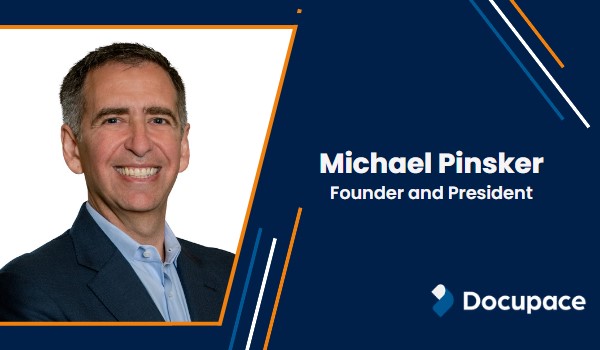Wealth management firms are experiencing a growing sense of urgency to modernize their back-office operations and bring them into better alignment with the front-line of their business.
After many years where the back office was largely ignored while improvements and innovations were deployed in the front office, firms large and small are finally addressing the changing technological and consumer landscape, said Michael Pinsker, president and founder of Docupace
“There’s all kinds of new technology that’s become available like AI and blockchain that haven’t really been brought to bear in the back office yet because it takes time to recognize how this tech can be adapted and what are the right business cases to solve for,” said Pinsker. “We’re still in the very early stages of the bell curve, and a handful of firms are working with these emerging technologies in the back office.”
In the meantime, more firms can improve their customer experience and aid their advisor workforce by bringing balance between front- and back-office technologies, and by integrating those technologies as much as possible, said Pinsker.
Before You Start
Because balance and integration are paramount, any attempt to modernize a firm’s technology needs to start from the top.
“Having a view from an executive standpoint that unites the business and looks at overall business objectives and outcome-driven behaviors is important,” said Pinsker. “Then leadership can establish what they want to do for customers moving forward, what it means for the front and the back office, and how they can optimize processes. They can think about what technologies and systems can be brought together to make sure there’s a free-flow of information. To make informed technology decisions, you need to see and have access to as much information as possible, and that’s why you want to take the view from the top.”
Pinsker emphasized the importance of thinking about technology and processes in the back office with outcomes in mind, both for wealth management clients as well as advisors and other employees in the firm.
Steps To Upgrade The Back Office
Step One, according to Pinsker, is to recognize that there is a need for new technology or processes in the back office—hence his warning that firms need to look from the top down in order to have a holistic view of how processes and technologies interact with each other.
“When setting goals, you need to look from a business standpoint, not just from a technology standpoint,” said Pinsker. “I wouldn’t constrain my thinking to a small area like technology. Instead, think overall as a business: what does success look like for you—what are you measuring? Of course that conversation has to start from the top.”
This thinking may eventually lead to very specific goals, said Pinsker, like a desire to have every client register satisfaction with their advisory relationship at least as a nine on a one-to-10 scale. While that goal might sound general and non-specific, it leads to deeper thought about what might make a client relationship successful.
Analysis Time
“Once a firm recognizes the need, the next step becomes: Okay, let’s consider what, specifically, we need to invest in to address that need,” said Pinsker. “This requires analysis. So if we’re looking at upgrading or replacing our CRM, we also need to think about our processing system, right? Does our processing system do a good job talking to our current CRM? Will it talk to a new CRM? Does it need to be replaced, too? Maybe we need to replace the CRM and another system—and those are the kind of questions that we need to ask before we can answer how we bring this transformation about.”
So, in our example of the firm that wanted to boost client-relationship satisfaction scores, firm leadership might think about what information they are providing to their clients, said Pinsker.
“You start asking meaningful, not necessarily technical questions,” he said. “Do I need to provide more information, or make weekly, monthly or quarterly calls to these investors to work on our relationship? What do I need to give clients more information, or more contact with their advisors?”
This is where technology can surface in a firm’s analysis, said Pinsker. A firm might discover that to improve client-relationship scores, they need to provide investors or advisors with more data or more points of contact—requiring a system that can handle all of that data, or more frequent communications.
Vendor Time
At this point in their analysis, wealth management firms have several places to turn for ideas and inspiration, said Pinsker.
“I can look at industry peers who have already implemented systems that do what we need,” he said. “Or I can go to conferences where I can see these systems in action and talk to the vendors who come together there and present solutions that solve for my objectives. This is how you start to peel the onion and get down to the decisions specific to what technology and which platform you select.”
Once a firm understands their objectives and has analyzed how to address them, then a partner must be selected, said Pinsker.
“This is a vendor who is going to help you achieve your objectives,” said Pinsker. “This partner or vendor has done it before. They’ve prepared platforms or put several platforms together to achieve the results that you’re seeking. Then you go to implementation.”
In the implementation step, the actions of the vendor have to be aligned with all of the firm’s internal stakeholders, said Pinsker, another reason why having buy-in from firm leadership and a top-down view is essential to the success of any significant change in technology or processes.
Alignment and Implementation
Everyone within a firm should be able to understand what is trying to be achieved with the upgraded operations.
“It’s not one decision and suddenly a new back office is there working for you, this is a process which you are embarking on, a process of digitization,” said Pinsker. “It may sound simple, but it’s surely not.”
A major, transformative change has to be managed, said Pinsker, and the people impacted all have to be given a voice, listened to, taken into account and brought on board to the business’s plan.
When all of the stakeholders are aligned, changes can be implemented with less friction and a higher probability of success, said Pinsker.
“Now everyone is in alignment with a shared set of goals and a timeline that is set—so you actually go together through the implementation,” he said. “You carefully measure at each step of the process to see how it is impacting your business. Once you’ve completed your initial implementation, then you can move into a mode where you’re fine-tuning processes and systems to find what I call ‘extra nuggets’ in your implementation journey: additional chances to implement change or to positively impact your business that you only found once the new processes or technology were being put in place.”
To learn more about how Docupace can help your firm, click here to schedule a discovery session.








